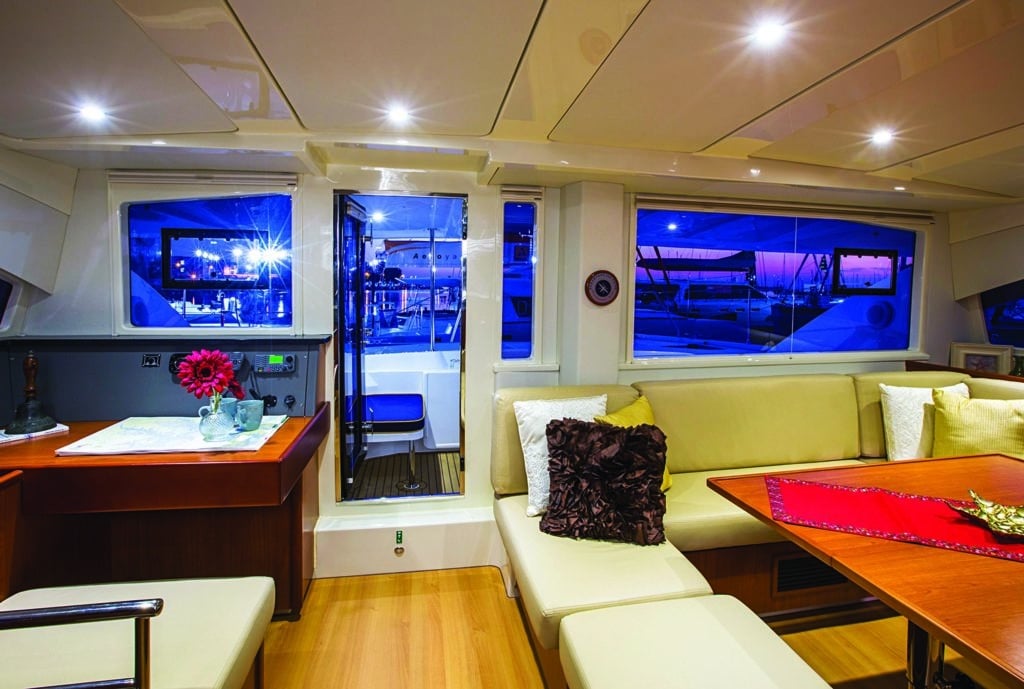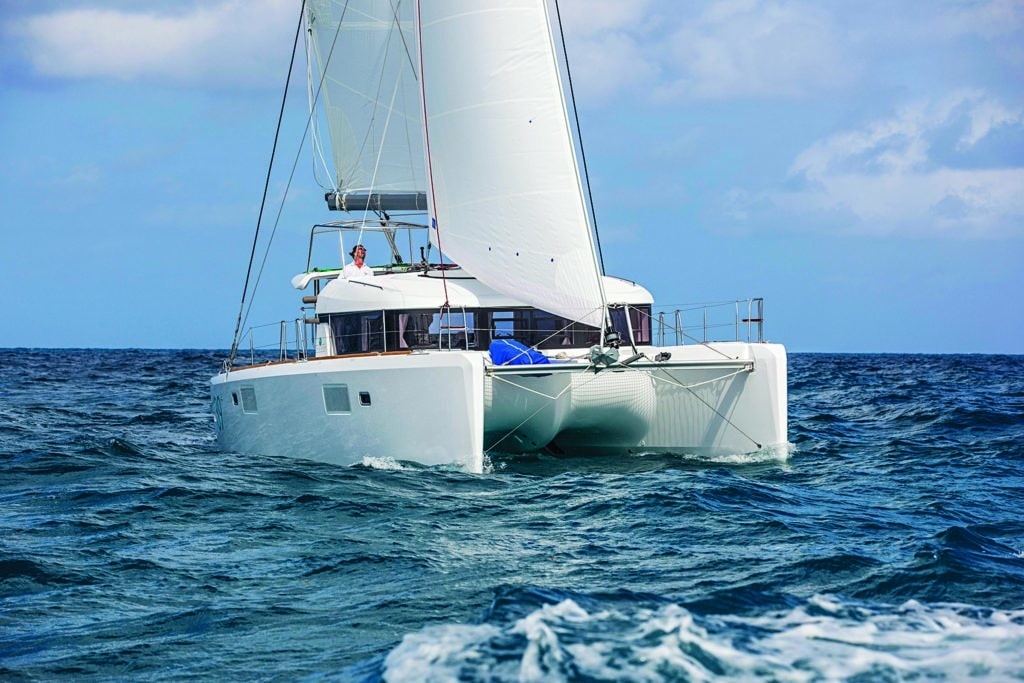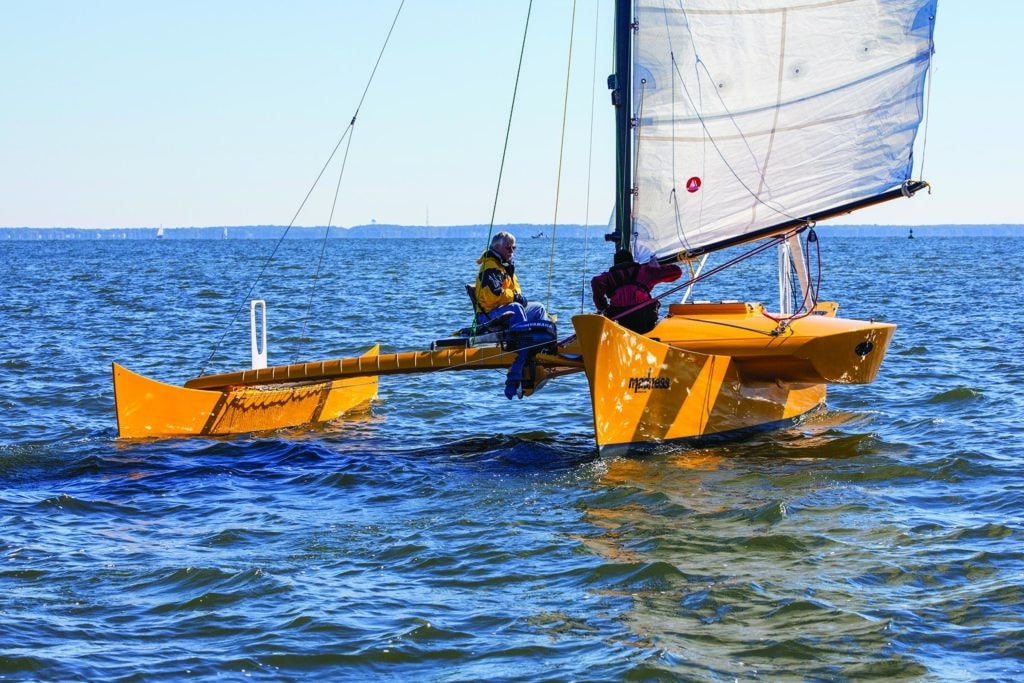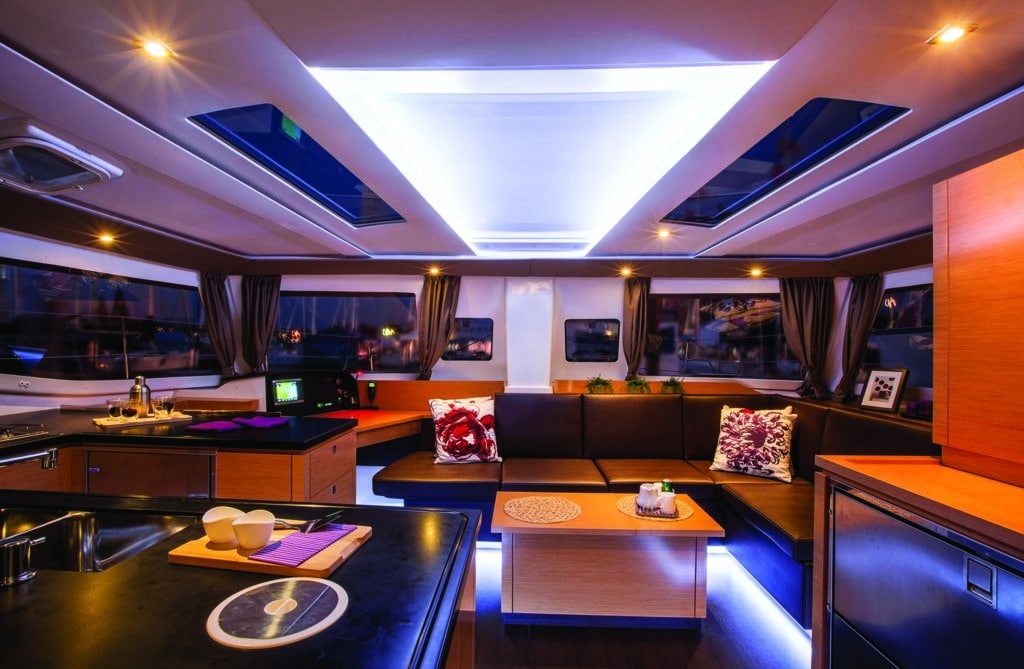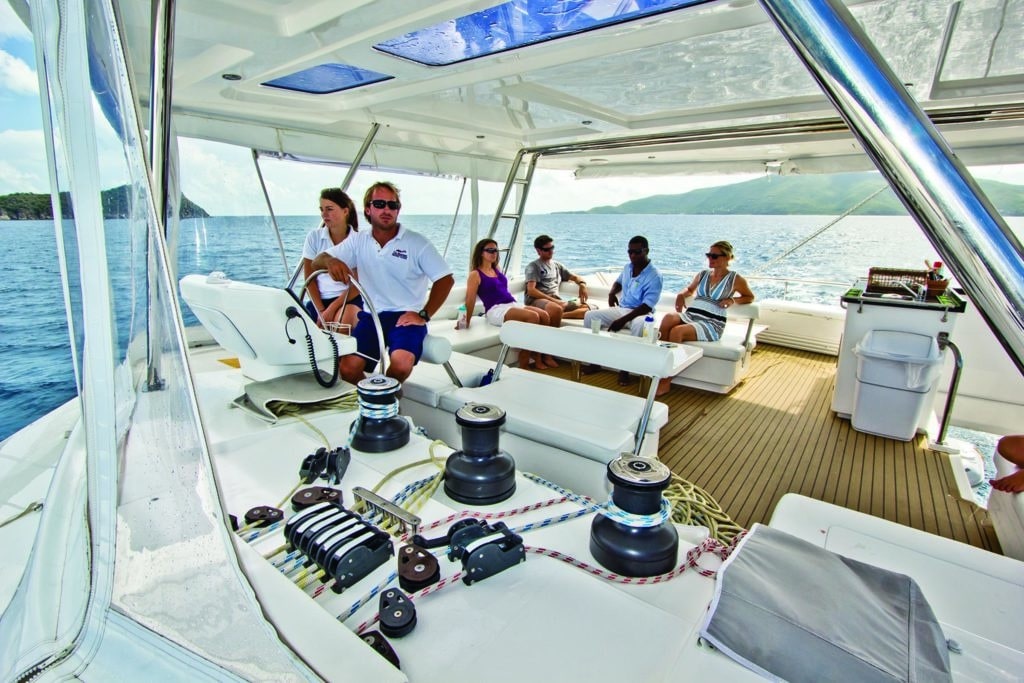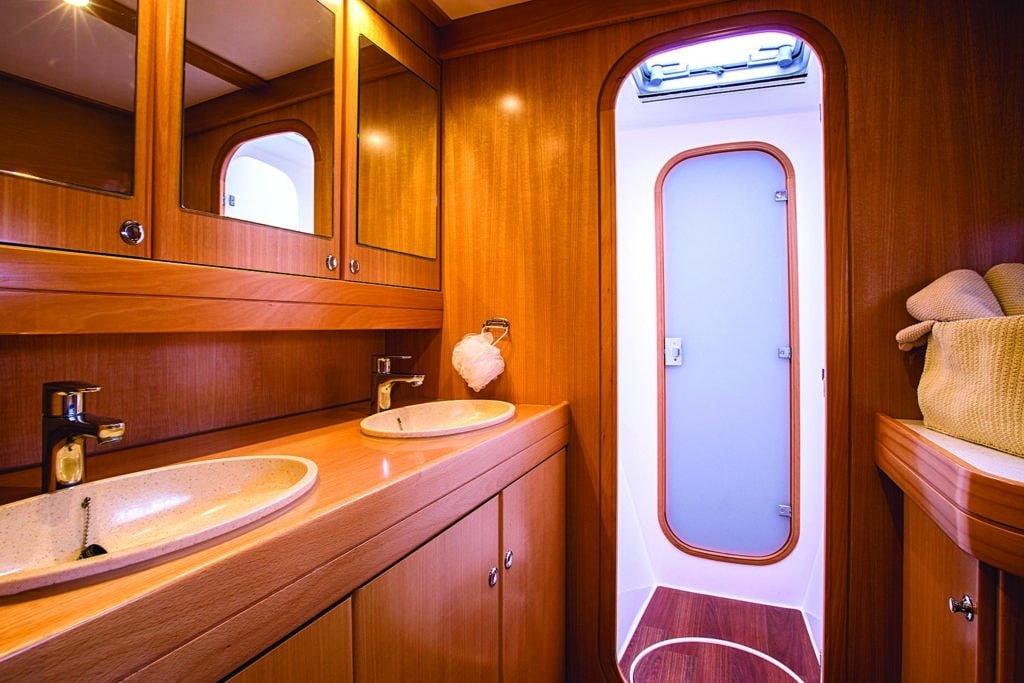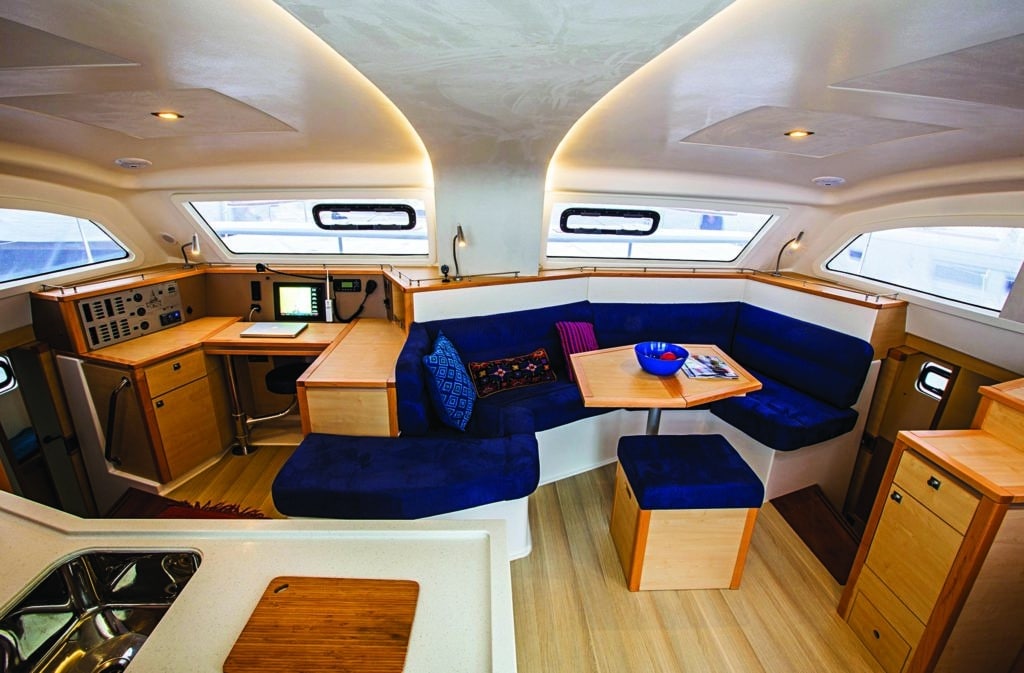There is nothing new under the sun; it’s just that we forget. By general consensus, the beginning of the great debate over monohulls versus multihulls dates to the cabal of multihull designers in the 1960s, such as Arthur Piver, Dick Newick and Jim Brown. But in fact this debate has raged for centuries, if not millennia. From the day the first log was dug out and set afloat, the question always has been how best to stabilize it, for the very shape that allowed it to glide through the water was what made it so perilously tippy. The physics have not changed, only the vocabulary; then, as now, seaworthiness can only be accomplished by one of two methods: geometric stabilization or placing weight where it’s needed to keep a vessel upright.
For the Polynesians, the first and easiest step was to add an outrigger to the dugout. As it only functioned to leeward, the vessel had to be able to sail in either direction without coming about (precluding a fixed rudder), and thus was born perhaps the first multihull, the proa. Then it occurred to someone: Why not add an outrigger to the other side and allow the vessel to present either side to the wind? Behold our first trimarans. No one could fail to notice that while the outriggers added to the craft’s stability, they did not enhance its cubic capacity. Why not take two hulls and separate them with crossbeams? Eureka, our first catamaran.
Dating back to the time of the Vikings and before, the West opted for stability through weight. If heavy stones could be placed beneath the metacenter of a single hull, they had a notable stiffening effect. It became apparent that the deeper and heavier the ballast, the better, and thus the deep-draft, heavily ballasted vessel evolved. Especially as the manufacturing and trading economies of Europe developed, cargo capacity trumped speed. Thus the sailing ships grew in beam, freeboard and displacement.
Fast-forward those many centuries to the aforementioned 1960s. It was a tumultuous and radical time, when everything “established” was questioned if not outright challenged. A new generation of sailors eschewed tradition and approached every aspect of design, materials and construction from a utilitarian point of view. There was no varnished teak or polished brass for this rebellious crowd; it was all about speed, speed and more speed.
The yachting community didn’t know what to do with these wild men and their multiple-hull flying machines. Outraged race committees banned them from regattas, and the sailing press seemed to pay more attention to their occasional failures than their overall successes, further widening the great divide.
But that was a half century ago, and multihulls are certainly fully in the mainstream today. One might have thought that by now the hardened opinions on either side of the mono/multi rift would have softened, but apparently the issue remains as polarized as red-state/blue-state politics, as witnessed by this posting on a popular sailing forum:
“One [the monohull] represents the zenith of thousands of years of maritime tradition and expertise, offering its skipper and crew a safe, sturdy platform on which to sail forth and experience all that is truly beautiful in this world of ours. The other [the multihull], well the other cannot honestly be termed anything more than an abomination. Crimes against nature, and each and every one of them a futile floating attempt to defy the laws of physics and common sense. True sailors avoid them.”
I don’t believe the Polynesians, who explored the unknown expanses of the Pacific Ocean, can be so easily dismissed as sailors. So at the risk of being hanged from the pilings as a heretic by my fellow monohullists, I would like to offer a few observations on the subject.
Matters of Choice
I have owned a series of monohulls, and not because I am a traditionalist per se. Rather it is because I have sought many of my adventures in the higher latitudes, which served up some horrifying conditions: mountainous graybeards of the Southern Ocean, crushing ice of the High Arctic, and gale upon gale in the North Pacific. When sailors linger in these zones, they can reasonably expect eventually to be turned upside down if not inside out. It is here that you might want a vessel that is compact in design, robust in construction, and at least somewhat likely to come back up should it capsize.
But I have also spent years wandering through tropical paradises, exploring balmy bays and lost lagoons. And always in these areas I wished I had less draft, more living area, better visibility and improved light-air performance — all traits that multihulls serve up in spades. So it is only through an honest assessment of personal priorities that one can come to a fair and logical conclusion as to which design suits best.
I met retired airline pilots Mark McClellen and Anne MacDonald, who sailed the Pacific for six years on their Deerfoot 50. This is an exceptionally spirited performer, and its interior was fitted out by Hinckley Yachts, so they wanted for nothing in terms of speed, weatherliness or elegant accommodations. Nevertheless, they recently changed their cruising vessel to a Dolphin catamaran.
Mark explained, “We loved our boat and most things about it, but one day in a very rolly anchorage in Vanuatu, we watched our neighbors on a catamaran relaxing over drinks in the aft cockpit while we were rolling rail-to-rail like a metronome.” Anne added, “The places we stopped were so beautiful. I wanted to be up above water level looking out, not trapped deep below. That’s why we named our new boat Three Sixty Blue. On rainy days we felt cooped up [on the Deerfoot]. On our cat the largest living area is the protected cockpit.”
Perhaps more important, they are both enthusiastic scuba divers, and the catamaran provides them with a spacious and stable diving platform. But these attributes come at a cost. Multihulls are generally more expensive, not just because of the extra materials required for multiple hulls, but because they are weight-sensitive enough to demand the use of lighter, stronger and therefore more costly materials.
But lining up a 40-foot mono with a 40-foot catamaran is not an apples-to-apples comparison. A more accurate measure may be with accommodations. A typical 40-foot catamaran offers at least 25 percent more room than its single-hulled cousin; thus the proper comparison would be a 40-foot multi to a 50-foot mono.
Now that monetary gap begins to close.
Debunking the Myths
When deciding how many hulls you want to sail on, there are also the issues of capsize, motion at sea, performance to weather, maneuvering, maintenance and dockage to consider.
I discussed at great length the mono/multi comparison with well-known multihull designer Ron Givens. Givens has had more than 40 of his multihull designs built, and he has sold over 6,000 plans for his Paper Tiger design alone. By any measure this is a runaway success.
“I don’t like to frame this discussion as mono versus multi,” he says. “I have sailed both extensively, and each has its merits. But I have averaged three trips a year up to the islands from New Zealand for the last 40 years, mostly on multihulls, and I am still fascinated with their potential.”
As for safety concerns, he says, “I have lost several friends on monos, and not a single one on a multi. And when did you last hear of a multihull flipping?”
This is a function of enhanced form stability via hull volume, shape, and width-to-length ratios. There is also a growing awareness of balancing performance with safe loading parameters. But even in the rare event of a capsize, we must remember the story of Rose Noelle, a trimaran that capsized off the coast of New Zealand and floated upside down for three months until its crew of three finally drifted back to shore. They were in such good condition that initially authorities thought their story to be a hoax. Offsetting the disadvantage of not being self-righting, as most keel boats are, is the fact that an overturned multihull makes the best life raft in the world — visible from the air, unsinkable, and full of essential equipment and supplies.
As for performance, one hesitates to make blanket statements, for, using a highway analogy, there are dump trucks and sports cars in both genres. Defying stereotypes, there are ultralight monohulls that plane off at astonishing speeds, and lumbering, overloaded cats with performance-punishing freeboard, substantial wetted surface and deep-dragging keels.
In general, one can expect the average cat to outsail the average mono off the wind, yet lose substantial ground to windward. However, if each design is sailed to its natural tactical advantage, the resulting VMG in variable wind strengths and directions, which ultimately is what matters, is surprisingly close.
That said, ocean passages are usually by design planned and conducted off the wind, and in simple terms of noon-to-noon runs, the multis will enjoy up to a 20 percent advantage. Further, this inherent speed potential can become a significant safety factor. With accurate, modern weather forecasting, a fast boat can position itself to avoid the worst of approaching storms and take advantage of wind shifts.
Here is where Givens gets excitable: “Design, design, design! A proper cat utilizes daggerboards, not keels,” he declares. “And many new designs are simply too heavy. There is no need to overbuild. Good engineering puts the strength where it is needed and lightness where it is possible.”
So there is a schism even within the catamaran camp. If opting for a multi, and especially for a performance design, one must adhere to strict weight limitations or increase the overall length to accommodate a given amount of personal gear. And size, or rather carrying volume, comes at substantial extra cost.
Life at Sea
As for the feel of sailing, traditionalists take pleasure in finding the sweet spot or “groove” of their vessel, usually at around 15 degrees of heel. The boat then responds to gusts and lulls with changing inclination, in a way that speaks to the helmsman. To be overcanvassed is obvious, and remedial reefing takes place in a timely fashion. This is an interactive, richly rewarding process. Also, because the boat heels in strong gusts, thus spilling the pressure, a mono should never even approach the breaking loads of its rigging wires.
By design, multihulls do not heel and can only be protected from rig overload by reefing early or accelerating out from beneath increased wind pressure. This demands that they be kept light and responsive, but, even so, this characteristic has its limits. Thus the multihull skipper must always be aware that the pressure of the wind increases at the square of its velocity. In squally conditions where the wind may suddenly increase from 20 to 40 knots, the actual pressure on the sails increases four times; at 60 knots, it’s nine times. This can place enormous loads upon the rigging. For all the talk of capsizes, dismasting is the most likely danger with catamarans. Put simply, a multihull can punish inattentiveness, and therefore requires a much higher degree of vigilance than a monohull.
Motion at sea is one of the most hotly contested talking points. The traditionalists see the multihulls as “jerky. Out of sync with the waves. And how about that slapping noise due to low bridgedeck clearance!” The multi enthusiast retorts with, “How do you enjoy being down in that deep, dark galley cooking on your ear?” While both arguments have their merits, they are too often overstated. Countless voyages have been safely and enjoyably executed in both designs.
As for maneuvering in tight quarters, until recently the twin engines of the catamarans had it hands-down over the single screws of the monos. Without touching the helm, the average cat can spin in its own length by using forward and reverse on the dual engine controls. However, the relatively high windage and lack of lateral resistance combine to create significant sideways slippage in windy conditions with most multihulls. On larger monohulls (and many smaller ones these days), bow thrusters have become nearly standard, and with the new integrated thruster and articulating saildrive systems gaining acceptance, the maneuverability gap has essentially been closed. Under power, it’s worth noting that catamarans have the advantage of redundancy with twin engines, especially if the systems share no common components. But, of course, that means twice the cost and time of maintenance.
Comforts and Cost
On the topics of stability, space and privacy, no one can rationally deny that catamarans hold the clear advantage. Even the most avid voyagers spend approximately 90 percent of their time at anchor. The stability of multihulls tames even the rolliest of open roadsteads. They offer enormous deck space for lounging and sport activities. Rear davits make shipping heavy RIBs and large outboards a breeze — something modern cruisers tend to do nightly. Wide aft arches and brackets hold solar panels, wind generators, antennas and grills without a sense of clutter. The average cockpit can entertain eight; comforts include built-in coolers, wet bars, visual contact with the galley, and more amenities than there is space here to list. The interior is bright, elevated and spacious. But perhaps the defining difference is in the privacy the two hulls offer. Sharing the cruising experience with family and friends can be a joy, but it is ever so much more enjoyable if one can retreat to an owner’s private hull (or even a guest cabin) for some quiet time and solitude.
The question of available dockage and marina fees is often raised. Yes, it is generally more difficult to find available space and more expensive to dock a beamy multihull. But marinas are retail businesses that respond to market forces. As cats become more prolific, more facilities to accommodate them are appearing.
For regular underwater inspection and light maintenance, a multihull can be safely and easily careened on any flat bottom with a minimum of tidal rise and fall. This advantage may be offset, though, because the typical Travelift cannot span a multihull, and specialty trailers and cradles, often hard to locate, are required to haul out.
Factors regarding resale value are too fluid to speak of with certainty. On the one hand, the greater investment in a multihull is somewhat protected by traditionally high resale values. However, as more multihulls are released from the charter fleets into the secondhand market, the average price of a used catamaran may moderate, thanks to supply and demand.
I acknowledge that trying to present a balanced argument with a litany of “on the other hands” might not make purchase decisions that much easier. I would suggest that potential boat buyers invest a good deal of time and thought into how they will most likely be using the vessel in terms of time on board, number of crew, a draft suitable to the area to be cruised, etc. Then charter a monohull and go back to the same waters aboard a cat. The cost of two charters is insignificant compared to the price of a new or used vessel. Sail both hard for a week in the areas and conditions that you think you’re most likely to encounter. Invite people on board. Get a feel for the draft, windward performance, speed, motion, accommodations and overall sense of utility. Even once the big decision is made as to which side of the great divide you’ll sail on, this process will help you refine your specific criteria and settle on a size and model that’s most suitable for you.
In the end, our approach to sailboats is not strictly a practical matter. There is a deeply emotional, even mysterious connection with our vessels. They reflect our sense of style and aesthetics and represent our longings for freedom. Whatever the size, shape or number of hulls, the right boat is the one that puts a smile on your face at the mere mention of it. That’s called love.
Alvah Simon is a CW contributing editor and has served as a Boat of the Year judge on several occasions, sailing aboard catamarans and monohulls.
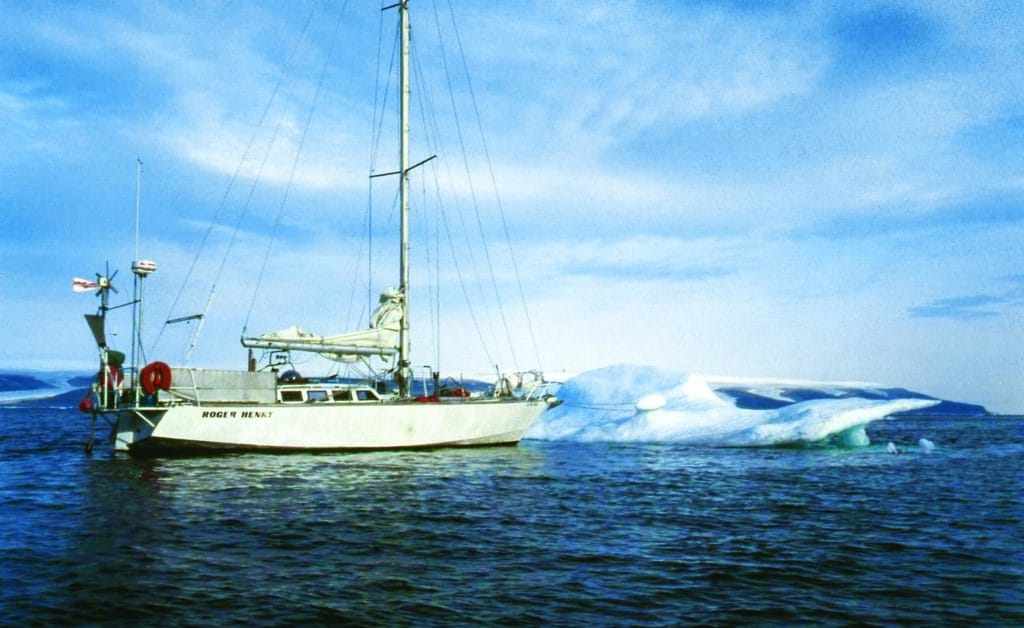
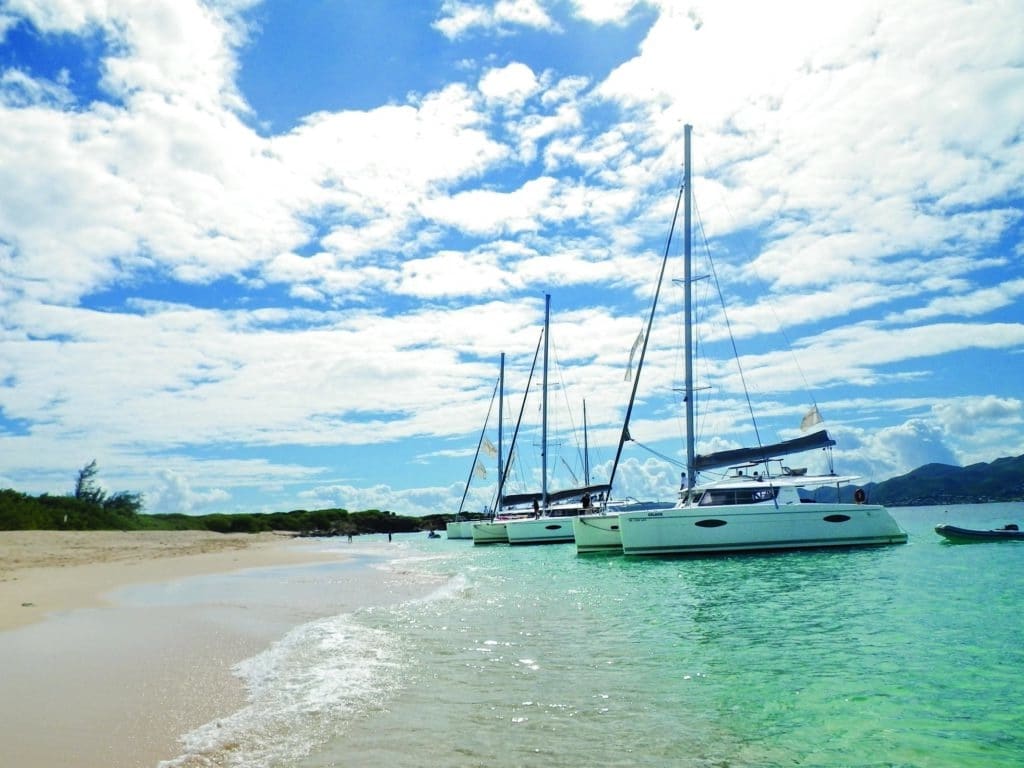
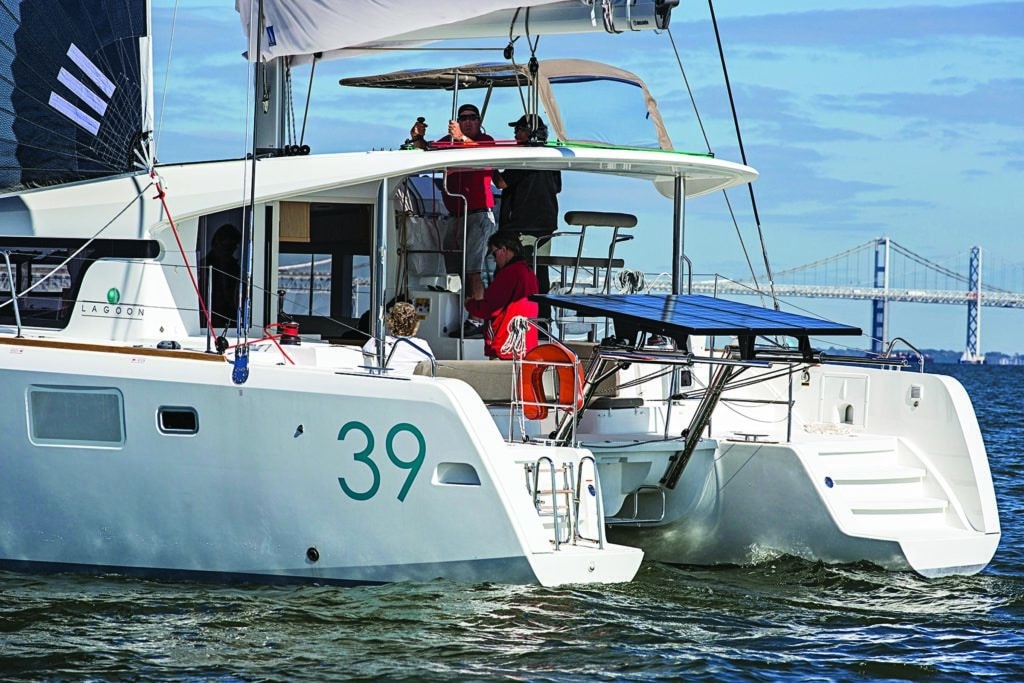
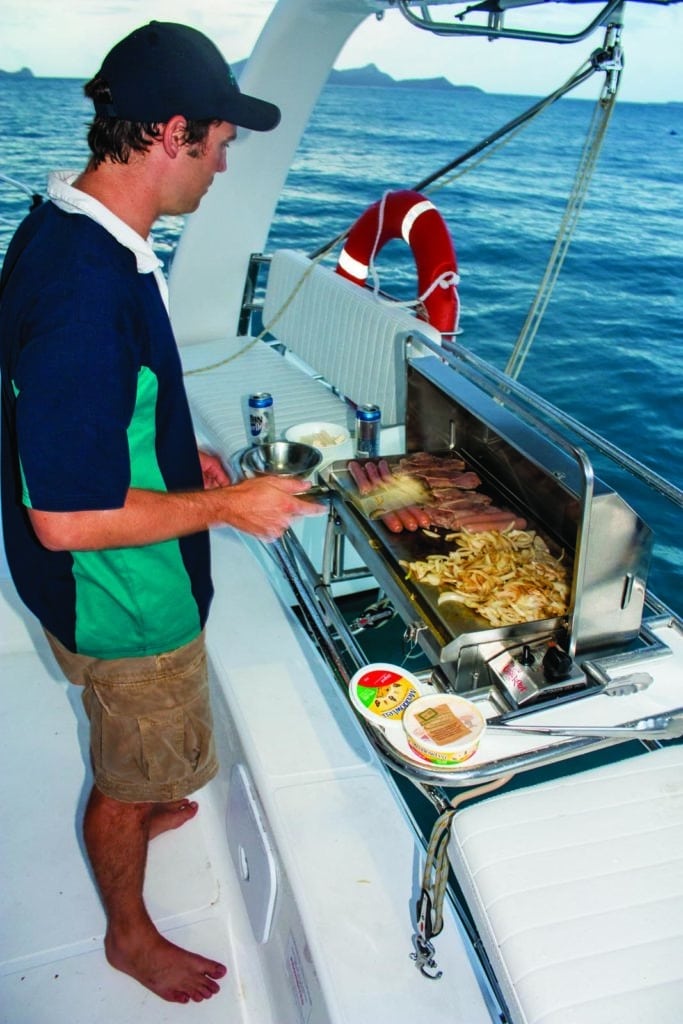
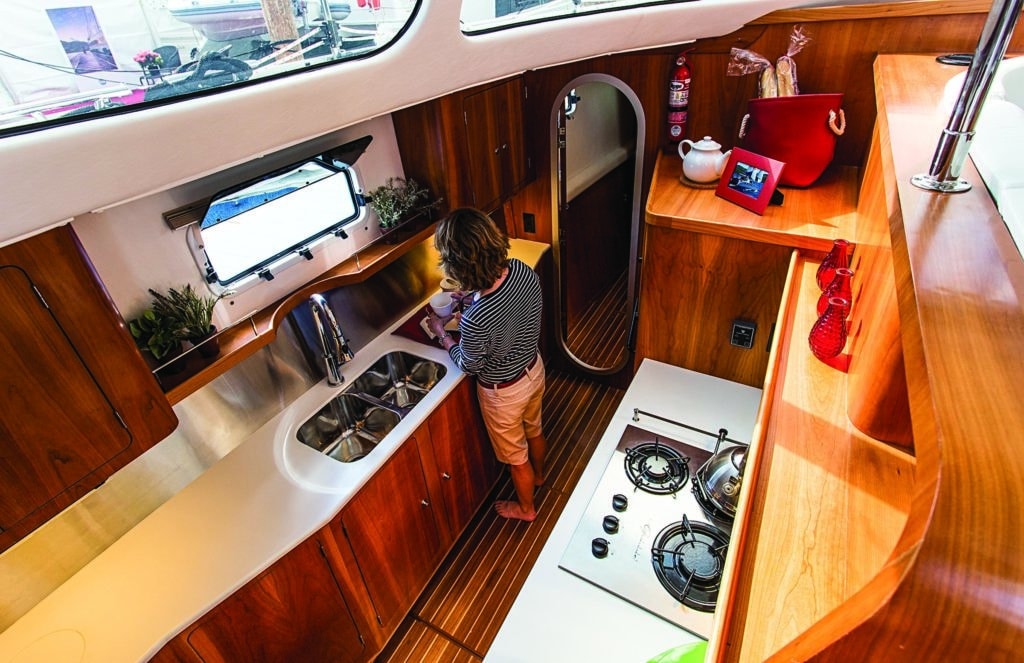
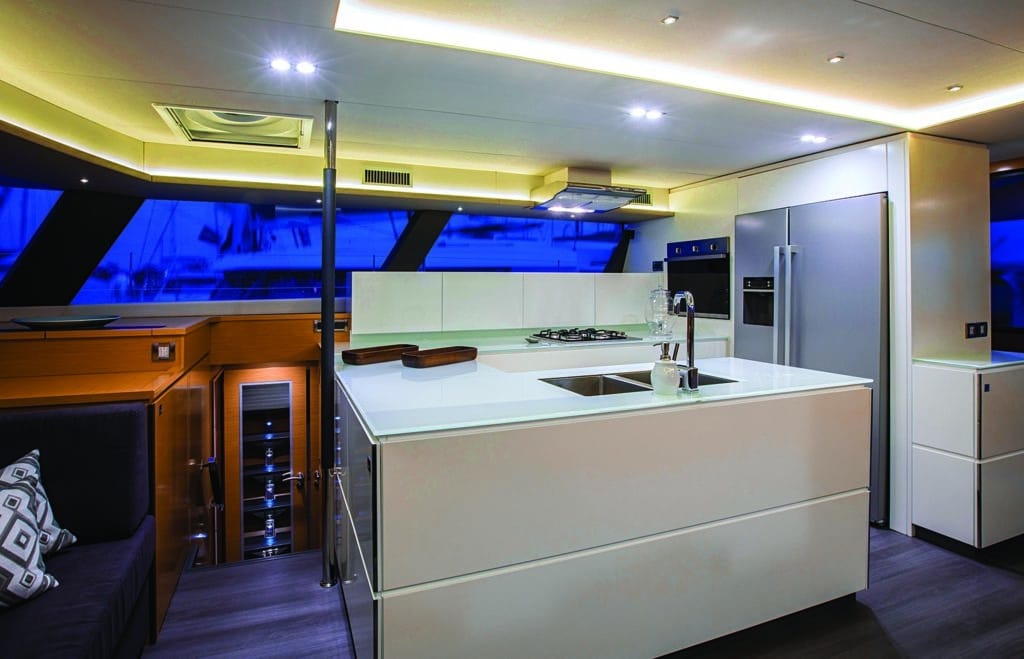
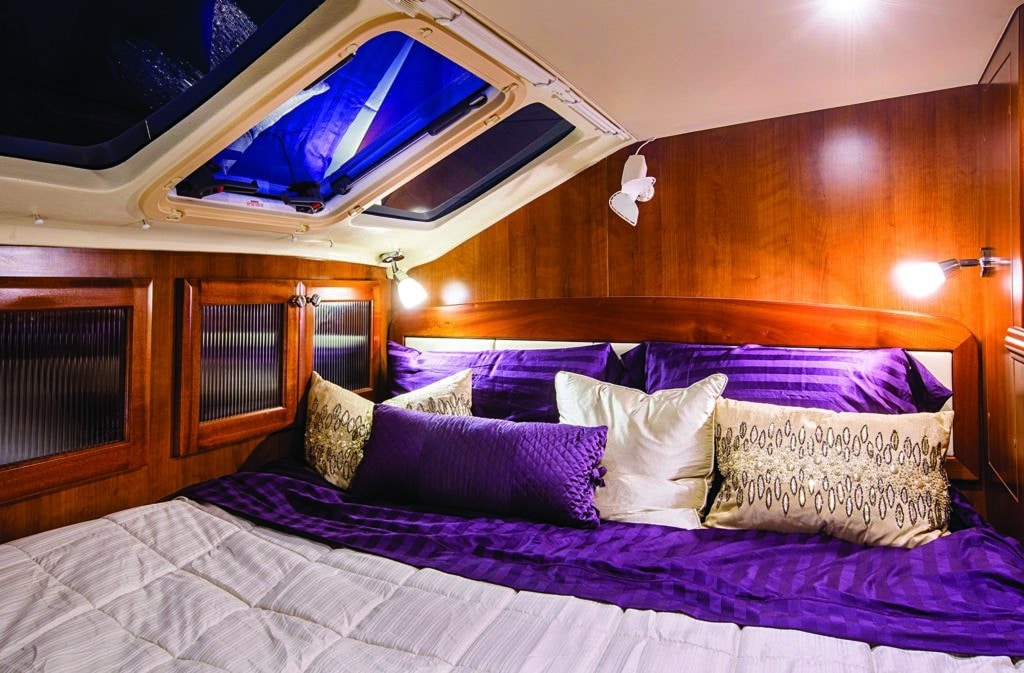
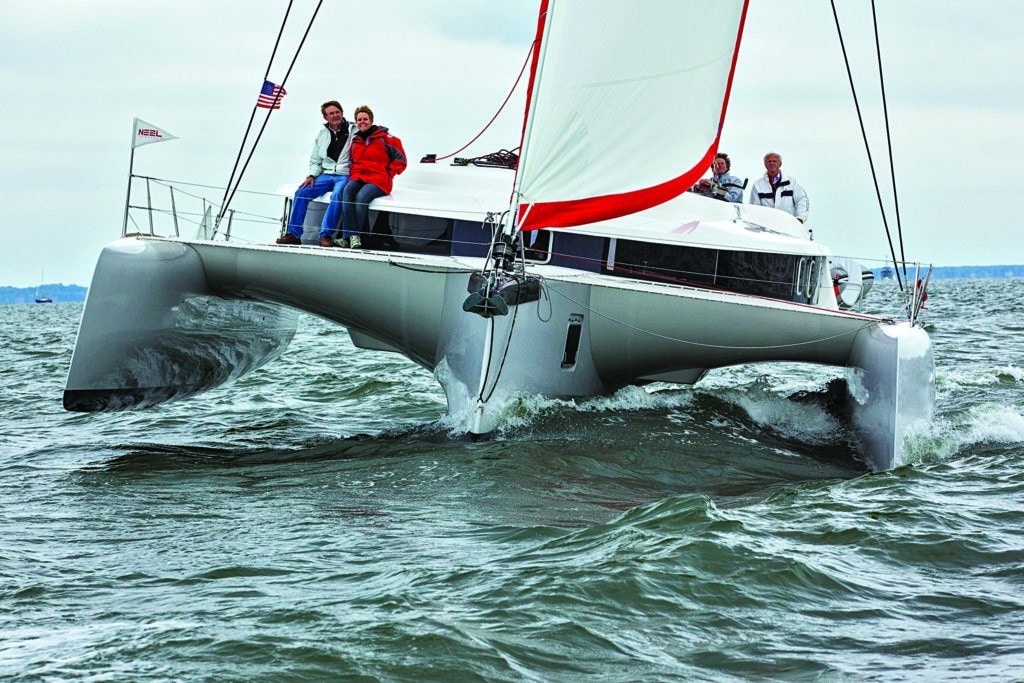
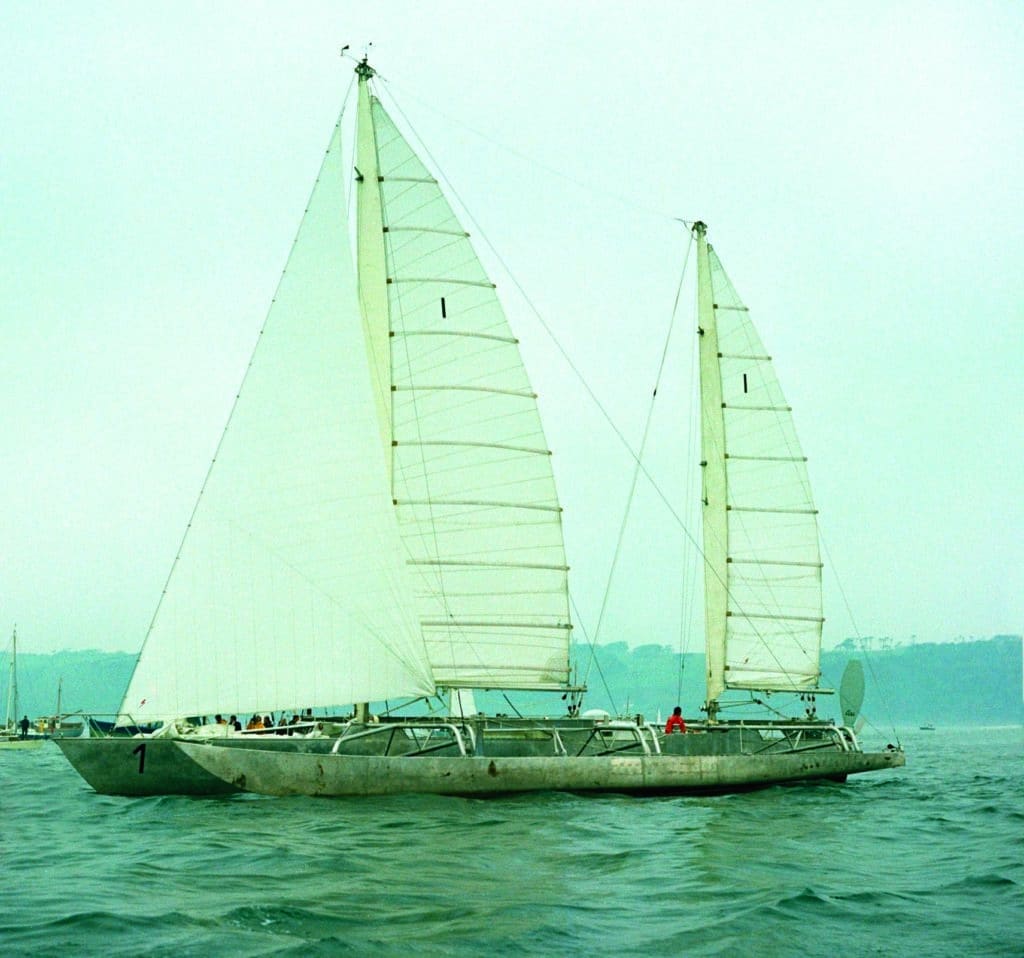
Circa 1968: Third Observer Singlehanded Transatlantic Race (OSTAR). Pen Duick III
